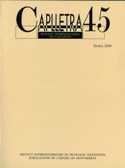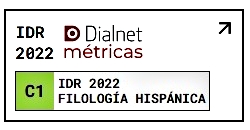Una anàlisi comparativa del coneixement de català de l'alumnat castellanoparlant autòcton i l'alumnat hispà en finalitzar l'educació infantil a Catalunya
DOI:
https://doi.org/10.7203/caplletra.45.4794Keywords:
Bilingualism, foreign students, family language, school language, childhood education, Hispanic students Abstract
Abstract
In Catalonia, in a short period of time, statistics have raised from the 1% recorded ten years ago to the current 13% of students of foreign’s origin. This change has increased linguistic diversity regarding student’s background. However, more than
a 50% are from Hispanic origin and the majority have Spanish as their mother tongue. In this case, and strictly from a linguistic point of view, the linguistic immersion programs used in Catalonia to teach Catalan to Spanish students maintain their validity. The article compares Catalan learning in two Spanish-speaking populations of 253 and 157 pupils of autochthonous and foreign origin at the end of childhood education. Results indicate that differences between both populations are related to
family factors such as the mother’s educational level, individual ones, time spent in Catalonia, and scholar factors, such as percentage of allophone students in their classroom.
 Downloads
Downloads
Downloads
Published
How to Cite
-
Abstract370
-
PDF (Català)179
Issue
Section
License
Authors submitting work to Caplletra for publication must be the legitimate holder of the usage rights. Legitimacy for the purposes of publishing the work must also include images, tables, diagrams and any other materials that may complement the text, whether they are the author of such material or not.
Copyright: on publishing their work in the journal, the author grants Caplletra. Revista Internacional de Filologia usage rights (reproduction, distribution and public communication) for both the paper printed version and for the electronic version.
All work published in Caplletra is covered by the Creative Commons license type Attribution-NonCommercial-NoDerivatives 4.0 (CC BY-NC-ND 4.0).
RESPONSABILITY
Caplletra. Revista Internacional de Filologia does not necessarily identify with the points of view expressed in the papers it publishes.
Caplletra. Revista Internacional de Filologia accepts no responsibility whatsoever for any eventual infringement of intellectual property rights on the part of authors.






